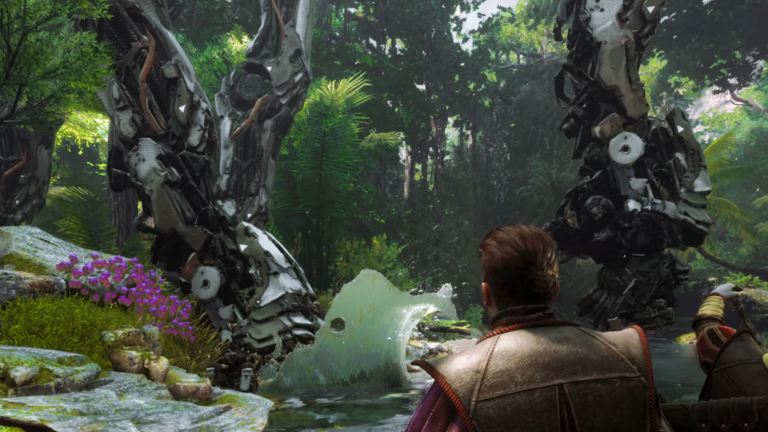PSVR 2’s Best New Features Explained
The PSVR 2's best new features are as exciting as they are confusing. Here's a rundown of what it all means.

Sony has finally revealed the PSVR 2, and while we don’t yet know the PS5 exclusive VR headset’s price or release date, everything we do know about the device’s best new features suggests that it’s going to be a worthy and fascinating follow-up to the surprisingly successful PSVR.
Of course, things can get very confusing very quickly whenever you start talking about a VR headsets’ specs and features. While the rise in VR technology in recent years has enhanced our collective understanding of the concept, it’s still difficult to tell exactly what a new headset will offer or how it compares to everything else that is out there.
That being the case, here’s a brief rundown of some of the PSVR 2’s most exciting features and how they’ll (hopefully) enhance your virtual reality gaming experience.
PSVR 2’s Forveated Rendering Will Maximize Performance With Fewer Resources
Foveated Rendering is obviously a term you don’t hear often outside of very specific circles, but it’s basically a technique that allows a VR headset to identify what the user is actually focusing on. Once the headset has identified what you’re locked in on, it’s able to devote more resources to that area while decreasing the resources currently being used to render the areas and objects outside of your field of vision.
Ideally, this technique will allow PSVR 2 to better manage the considerable resources required to render high-end VR games. While it remains to be seen if the PSVR 2 will realize the full potential of this concept, it must be said that developers have been using similar tricks for years in order to improve the resources management and load times of open-world games.
PSVR 2’s Inside Out Tracking Allows For a Smoother and Simpler VR Experience
Many older VR headsets (including early models of more modern designs) utilized what is sometimes referred to as “Outside In” tracking, which basically means that the headset communicated with external sensors in order to better determine your position in the room and your movements. It was a fairly simple solution for the time, but those extra sensors made setting up a VR headset that much more complicated (and they didn’t always “read the room” as well as they should have).
Inside Out tracking removes those external sensors and places them within the headset itself. While there are times when modern Inside Out VR headsets can struggle to properly register certain user movements (due to the lack of external sensors), modern advancements in the technology have made it that much easier to appreciate the ways that Inside Out tracking eliminates so much of the clutter and confusion that comes with setting up certain VR headsets.
PSVR 2’s Headset and Controller Haptic Feedback Could be a Game Changer (or a Painful Annoyance)
Haptic Feedback has certainly become more popular in recent years, but for those who haven’t gotten a chance to experience the technology for themselves, it’s basically an advanced form of “vibration” that better relays certain sensations such as handling multiple items, variable force, and resistance. The PS5 controller is practically built around the technology.
That makes it easy to guess what the PSVR 2’s controllers will “feel” like, but it’s not entirely clear how Haptic Feedback will impact the headset itself. It’s easy to assume it will the feedback won’t be nearly as intense, but I’m certainly curious to see how far developers push that feature.
PSVR 2’s Sixaxis Motion Sensing Should Enable More Advanced Motion Controls
The term “Sixaxis” became a bit of a joke after Sony struggled to really sell everyone on the PS3’s motion controls, but the company has retained the verbiage throughout the years to describe the evolution of that basic technological concept.
That appears to explain the use of that term here, with the PlayStation team noting that the PSVR2’s controllers will benefit from a Six-axis motion sensing system (three-axis gyroscope, three-axis accelerometer). It all basically means that the PSVR 2 should hopefully offer more accurate and advanced motion controls that better register a wider range of movements.
PSVR 2’s Eye Tracking, OLED Resolution, and 110° FOV Make it a High-End VR Competitor
Anyone familiar with modern displays will understand why the PVR2’s upgrade from an LCD display to an OLED display is a big deal (it also means an upgrade from 1920×1080 to 2000×2040 resolution), but it’s the fact that the PSVR2 will offer 4K resolution alongside Eye Tracking and an increased field-of-view that makes the entire package so appealing.
Simply put, the PSVR 2 is poised to offer one of the most efficient, powerful, and practical VR headsets we’ve seen so far. If all of those features come together in the right way (and the PSVR2 doesn’t end up being too expensive), it could very well prove to be that rare kind of “entry-level” high-end VR device that has eluded the market so far.
